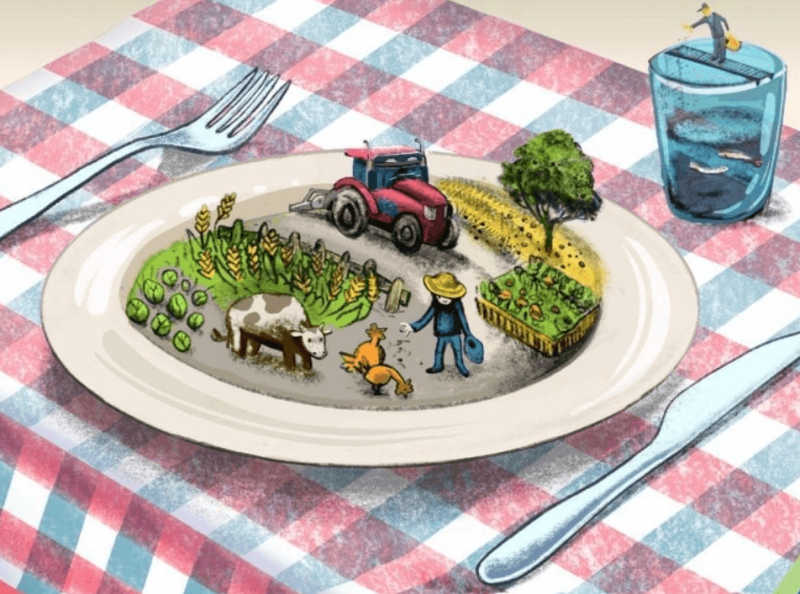With its new Farm to Fork (F2F) strategy, the EU plans to expand organic farming, an approach that rules out both synthetic chemicals and modern biotechnology, and it intends to use trade and assistance policies to pursue this strategy not just at home but also through Green Alliances abroad. The United States, by contrast, is emphasizing agricultural innovations based on the latest science—including gene-editing—and is now organizing with other countries a Coalition for Productivity Growth as a counter to European influence. Environmentalists in Europe believe their new vision is “green,” but on closer inspection it is not. If organic farming scaled up to replace 25 percent of conventional farming in Europe, much more land would have to be converted to food production, with damaging results for wildlife habitat and the climate. In its earlier rejection of GMOs, Europe caused environmental harm by foregoing options to cut insecticide use and adopt no-till practices. Europe’s regulatory example also discouraged the adoption of GMO food crops around the world. Europe is now inviting similar harms by classifying and regulating gene-edited crops as GMOs, but this most recent aversion to agricultural science is less likely to enjoy global influence.
A new trans-Atlantic argument has broken out—over competing visions of sustainable farming. The EU wants to expand organic production, an approach that rules out both synthetic chemicals and modern biotechnology. The United States is going in the other direction, embracing innovations based on the latest science.
These important differences surfaced at a G20 Agriculture Ministers meeting in Italy in September 2021, where U.S. Secretary of Agriculture Tom Vilsack said, “It’s pretty clear there are two different pathways, and I think the United States and many other countries are going to go down one path [while] the EU is going to go down a different path” (Wax and Anderson, 2021). Secretary Vilsack then invited like-minded nations to join with the United States to form a new Coalition for Productivity Growth, as a counter to EU influence on these issues. Within a month, nine non-European countries had publicly joined, including leading agricultural exporters Australia and Brazil.1
In the past Washington and Brussels have often clashed over agricultural policy, especially over Europe’s more restrictive trade policies and its more precautionary food safety policies, both of which can constrain America’s commercial farm product exports. Market access is at issue in this new dispute as well, but framed now around environmental sustainability in farming.
Europe points with legitimate pride to its environmental policies, which are stronger than those of the United States in many sectors. In agriculture, however, a history of protectionist policies in the twentieth century left most of European farming far from green. In the current century, Europe’s Green Parties have wisely tried to correct this shortcoming, but now they are embracing a flawed strategy for doing so.
1. Europe’s not-so-green farming sector
Despite considerable progress on the chemical front, Europe continues to use excessive nitrogen fertilizer on crops, and it also allows excessive nitrogen emissions from livestock operations, causing acid rain, soil acidification, algal bloom, eutrophication in waterways, and animal die-offs.
…
While continuing to lag in reducing farm chemical pollution, Europe has also failed to match the United States in production and farm productivity gains. Between 1980 and 2000 annual gains in total factor productivity in Europe were only half as high as in North America (Coelli and Rao 2005).
…
….
Because organic farming constrains production so much, it is not sustainable at scale. The lower crop yields mean more land must be farmed to produce the same amount of food, leading to more soil carbon release, more deforestation, and more loss of wildlife habitat. For every bushel of production, organic farming also generates greater ammonia emissions compared to conventional systems, greater nitrous oxide emissions, and more nitrogen leaching (Tuomisto, et al., 2012). In addition, some of the (non-synthetic) pesticides used on organic farms, such as copper-based fungicides and broad spectrum biological insecticides, can harm non-target organisms, including honeybees (Purnhagen, et al., 2021).
…
These unpleasant realities are not being faced squarely in Europe.
This is an excerpt. Read the original post here (behind paywall).































